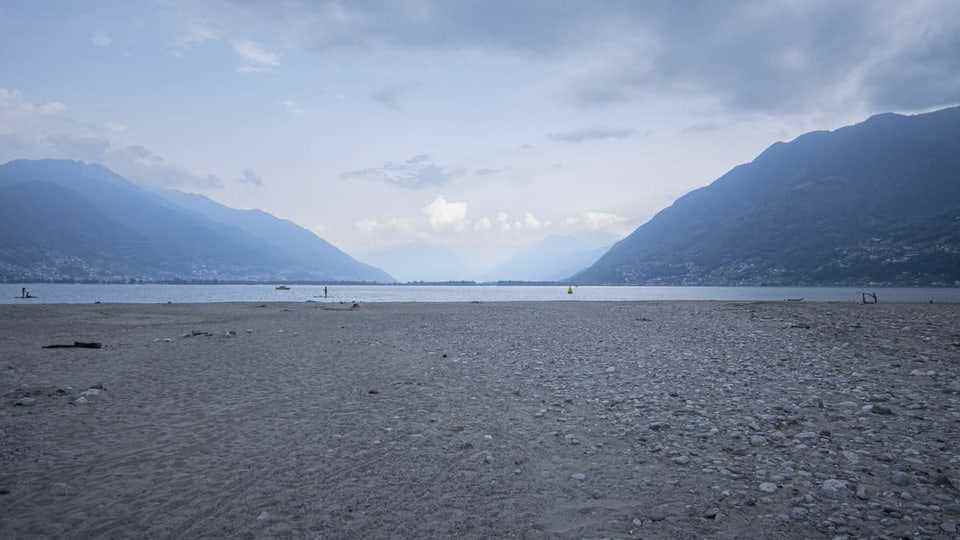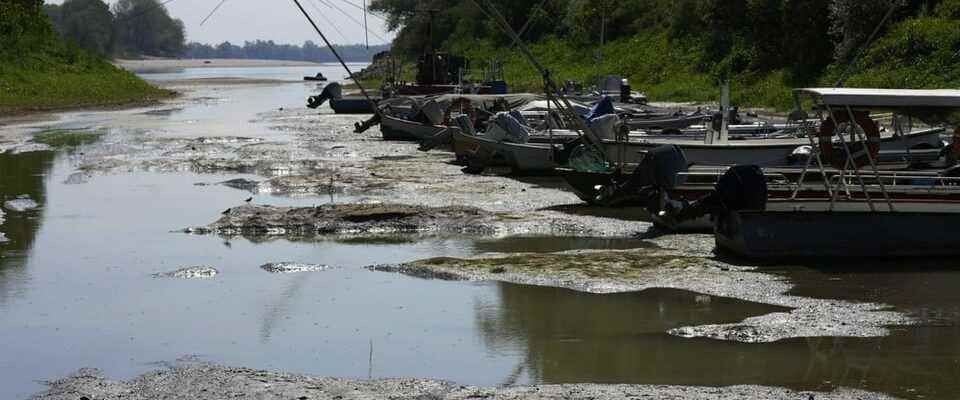contents
The drought is the same. But compared to the situation in northern Italy, southern Switzerland is a bit greener.
Italian farmer Sandro Passerini is standing in one of his huge corn fields. «The water is missing. We had to decide which fields we wanted to water at least every two weeks. We’re going to lose half our corn crop. All the farmers of the Po Valley are like us.» Farmer Passerini relies on organic farming. He says that helps now in the crisis. His corn needs less water. He also has other mainstays, such as a small restaurant and a farm shop.
Nevertheless, his frustration with the authorities is great. “We have different offices, none of which communicate with each other. Chaos reigns. The money is missing anyway. That means we get nothing. Nothing happens.” Bauer Passerini believes that there is an urgent need to invest in the water infrastructure and, above all, in the organization of the water during the winter and spring months.
Legend:
The water level in the Po is extremely low.
key stone
The Italian state is currently pumping millions of euros into the crisis regions. Meuccio Berselli, head of the organization that controls the waters of the Po Valley, hopes this will be the turning point for future water management. “The system that we have here in the Po Valley is in danger of collapsing. We have to invest and we can’t lose any more time.”
“Good diversification”
In Italy, 40 percent of the water seeps away unused. 50 kilometers north of Bauer Passerini’s corn field, in Ticino, the situation is much more relaxed. The streams in southern Ticino have also dried up and you are not allowed to wash your car in Mendrisio.
But you are far, far away from a situation like him on the other side of the border, says Mauro Veronesi. He is responsible for water in the canton of Ticino. “We have a good diversification of sources. We have springs in the mountains, groundwater that we can use with the wells and also water from the lake. I don’t think that’s the case in Italy. In Italy, the share of agriculture is also very high. That’s not the case with us.”
Law promotes water exchange
Although Ticino is a rural canton, households are the biggest water consumers, says Veronesi. A new waterworks was recently built for them, or rather for the residents of the city of Mendrisio. At 130 meters below the surface, it is the deepest well in southern Switzerland. It costs around four and a half million Swiss francs. A law has also been in force for 30 years that promotes the regional exchange of water.

Legend:
The Maggia in Ticino (mouth into Lake Maggiore) is also dry.
key stone
“For example, if a community has water available, it can deliver the water to the neighboring communities if they are in a shortage situation. Without the support of this law, it might have been difficult to implement the links.” Without this state-sponsored solidarity among communities, the water scarcity would be much, much worse, says Veronesi.
According to the Federal Office for the Environment, nine other cantons already have such a water solidarity system. Another important building block for the relatively privileged water situation in southern Switzerland are the specifications of the association for water suppliers.
“That helps to maintain the infrastructure, i.e. at a good level. And there is also a good exchange of knowledge between cantons and I think that doesn’t exist in Italy.”
